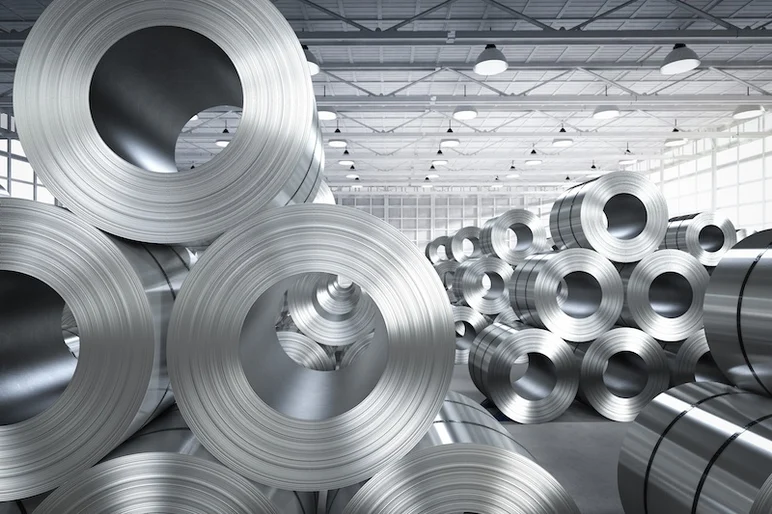Ferrous alloys are a class of metallic materials primarily composed of iron (Fe) as the major element, along with varying amounts of other alloying elements such as carbon (C), manganese (Mn), chromium (Cr), nickel (Ni), and others. These alloys are known for their exceptional strength, durability, and magnetic properties, making them essential in various industrial applications. The term “ferrous” is derived from the Latin word “ferrum,” which means iron, and it distinguishes these alloys from non-ferrous alloys, which do not contain significant amounts of iron.
One of the most well-known ferrous alloys is steel, which is primarily composed of iron and carbon, with additional alloying elements used to enhance its properties. Steel is renowned for its versatility and is widely used in construction, automotive manufacturing, aerospace, and countless other industries. Another important ferrous alloy group includes cast iron, which contains higher levels of carbon and often silicon compared to steel. Cast iron is favored for its excellent castability and heat retention properties, making it suitable for applications like engine blocks, cookware, and pipes.
Ferrous alloys have played a pivotal role in the development of modern industry and infrastructure due to their remarkable mechanical and thermal properties. The ability to tailor these alloys by adjusting their composition and heat treatment processes has led to a wide range of specialized materials designed to meet specific engineering requirements, making ferrous alloys an integral part of our everyday lives.
C45 steel is a notable example of a ferrous alloy with specific properties that make it well-suited for applications requiring high strength and wear resistance. This medium carbon steel contains alloying elements like manganese and chromium, contributing to its exceptional hardness and durability. C45 steel finds extensive use in manufacturing components like gears, axles, and shafts, where its reliable performance enhances the longevity and efficiency of various mechanical systems.
The Role of Iron in Ferrous Alloys
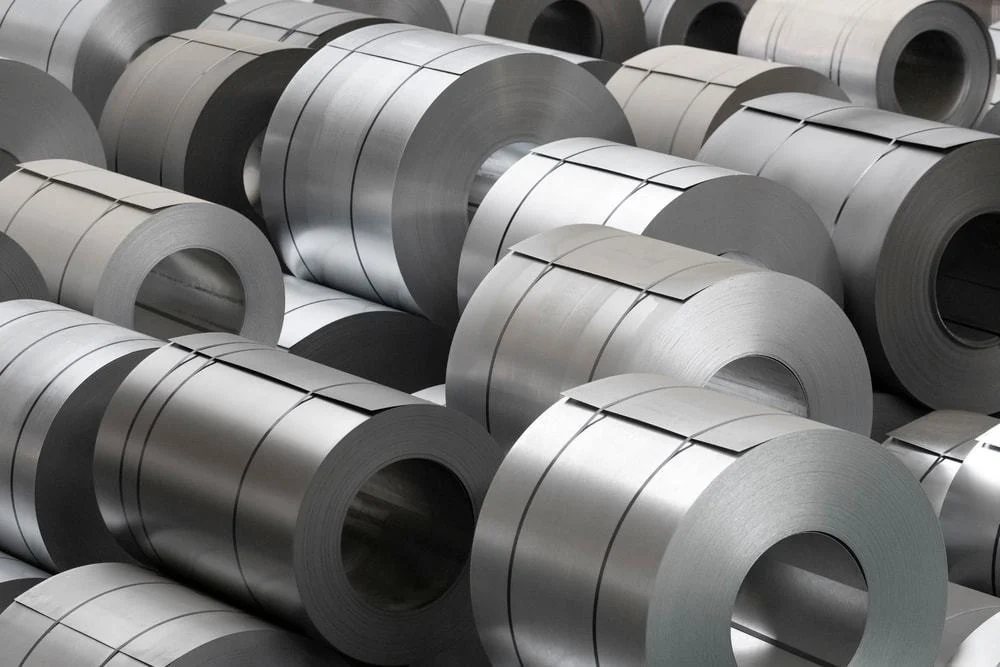
The Role of Iron in Ferrous Alloys
Iron (Fe) plays a central and defining role in ferrous alloys, which are named after this elemental base. The amount and behavior of iron within these alloys significantly influence their mechanical, magnetic, and thermal properties. Iron’s primary role in ferrous alloys is to provide a strong and sturdy matrix that forms the backbone of the material. Its atomic structure and ability to form metallic bonds with other elements make it an excellent choice for creating durable and versatile alloys.
In the case of steel, the most common ferrous alloy, iron serves as the base material, with the addition of carbon (typically in the form of iron carbides) and other alloying elements. The carbon content in steel can be adjusted to achieve a wide range of mechanical properties, from soft and malleable to hard and brittle, making steel suitable for applications ranging from building construction to the production of sharp cutting tools. The presence of iron also imparts ferromagnetic properties to many ferrous alloys, which is a unique characteristic utilized in various electronic devices and applications.
In cast iron, another prominent ferrous alloy, iron’s high carbon content (usually between 2% and 4%) is a defining feature. This high carbon content gives cast iron its characteristic hardness and brittleness, making it suitable for applications where wear resistance and heat retention are critical, such as in engine blocks and cookware. In summary, iron’s ability to form alloys with a wide range of other elements and its strong, metallic bonding characteristics make it the foundational element in ferrous alloys, allowing for the tailoring of materials with diverse properties to meet specific industrial and engineering needs.
Types of Ferrous Alloys and Their Composition
Ferrous alloys encompass a wide range of materials, each tailored for specific applications based on their composition. Here are some common types of ferrous alloys and their compositions:
Carbon Steels: Carbon steels are perhaps the most widely used ferrous alloys, consisting primarily of iron and carbon. The carbon content can vary from less than 0.1% to around 2.1%, affecting the material’s properties significantly. Low-carbon steels are ductile and easy to form, making them suitable for applications like sheet metal and automotive body panels. Medium-carbon steels strike a balance between strength and ductility and are commonly used in structures and machinery. High-carbon steels are exceptionally strong and hard, making them suitable for cutting tools and springs.
Stainless Steels: Stainless steels are iron-chromium alloys with at least 10.5% chromium and often contain nickel and other alloying elements. The chromium content provides corrosion resistance and gives these alloys their “stainless” property. Various grades of stainless steel exist, with different alloying elements and compositions, making them suitable for applications ranging from kitchen utensils to chemical processing equipment.
Cast Iron: Cast iron alloys contain a high percentage of iron, typically between 2% and 4% carbon, and often small amounts of silicon. This high carbon content makes cast iron hard and brittle. There are different types of cast iron, including gray cast iron, ductile cast iron, and white cast iron, each with unique properties. Gray cast iron is known for its good castability and is used in engine blocks and pipes. Ductile cast iron has improved ductility and is used in applications like water pipes and automotive components. White cast iron is extremely hard and is used for wear-resistant applications.
Tool Steels: Tool steels are specialized ferrous alloys designed for cutting, shaping, and forming materials. They contain various alloying elements such as tungsten, molybdenum, and vanadium, in addition to iron and carbon. Tool steels are characterized by their high hardness, wear resistance, and ability to maintain their cutting edge at high temperatures. They are used for making cutting tools, dies, and molds.
These are just a few examples of the many types of ferrous alloys, and there are numerous other specialized alloys tailored for specific applications, each with its unique composition to achieve desired properties. The versatility of ferrous alloys makes them indispensable in various industries, from construction and manufacturing to aerospace and automotive.
Carbon Steel: A Common Ferrous Alloy
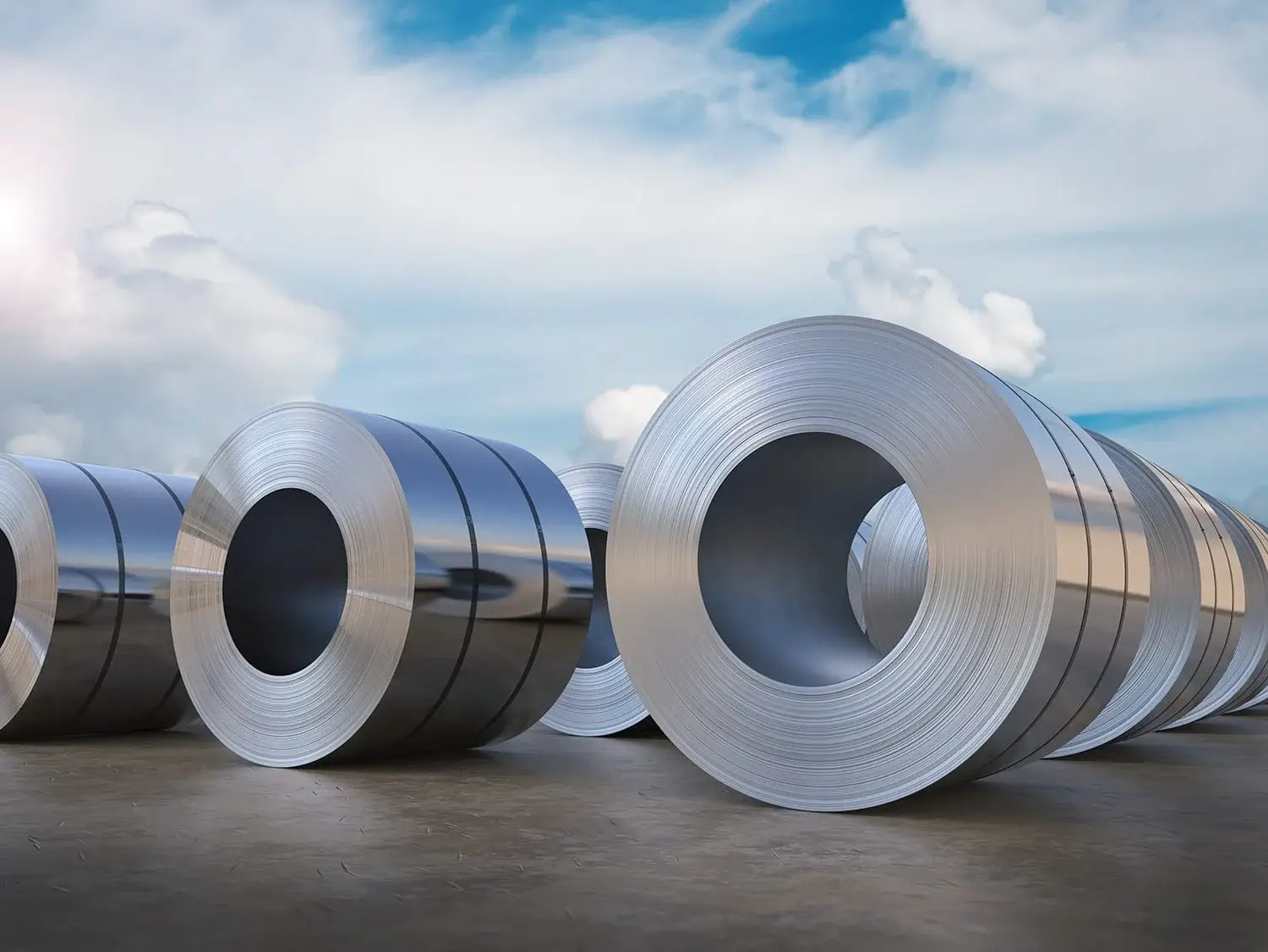
Carbon Steel: A Common Ferrous Alloy
Carbon steel is one of the most common and widely used ferrous alloys, known for its versatility, strength, and affordability. It is primarily composed of iron (Fe) and carbon (C), with small amounts of other elements like manganese, sulfur, and phosphorus. The carbon content in carbon steel typically ranges from less than 0.1% to about 2.1%, which significantly influences its mechanical properties.
Low-carbon steels, with a carbon content below 0.3%, are known for their excellent weldability, ductility, and ease of forming. They are commonly used in applications where strength and hardness are not the primary requirements, such as sheet metal fabrication, construction materials, and automotive body panels.
Medium-carbon steels, with carbon content ranging from 0.3% to 0.6%, offer a balance between strength and ductility. They are frequently employed in structural components, machinery parts, and components requiring moderate hardness and wear resistance.
High-carbon steels, with carbon content exceeding 0.6%, are exceptionally strong and hard. These steels are known for their excellent hardness and wear resistance, making them suitable for cutting tools, blades, and springs.
The versatility of carbon steel, coupled with the ability to tailor its properties by adjusting carbon content and heat treatment, has made it a cornerstone material in various industries, from construction and manufacturing to automotive and infrastructure. Its widespread use is a testament to its reliability and cost-effectiveness for a wide range of applications
Stainless Steel: Combining Iron and Chromium
Stainless steel is a remarkable ferrous alloy that combines iron (Fe) with a significant amount of chromium (Cr) as its defining characteristic. This alloy also typically contains nickel (Ni) and other alloying elements like molybdenum (Mo) and manganese (Mn). The key feature of stainless steel is its exceptional resistance to corrosion and staining, which is achieved through the formation of a protective oxide layer on its surface when exposed to oxygen.
The chromium content in stainless steel is crucial in preventing rust and corrosion. Typically, stainless steel contains at least 10.5% chromium, which reacts with oxygen in the atmosphere to create a thin, invisible layer of chromium oxide on the steel’s surface. This oxide layer acts as a barrier, protecting the underlying steel from further oxidation and corrosion. The addition of nickel enhances the steel’s resistance to both corrosion and staining, making it suitable for a wide range of applications where hygiene, durability, and aesthetics are important.
Stainless steel comes in various grades, each with its specific composition and properties. For instance, the 304 grade (18-8 stainless steel) is commonly used in kitchen appliances and food processing equipment due to its excellent corrosion resistance and ease of cleaning. The 316 grade (marine-grade stainless steel) contains additional molybdenum, making it highly resistant to corrosion in saltwater environments, making it suitable for marine applications and chemical processing equipment. Stainless steel’s versatility and durability have led to its extensive use in industries such as architecture, healthcare, automotive, and aerospace, where its unique combination of strength, corrosion resistance, and aesthetic appeal is highly valued.
Alloying Elements in Ferrous Alloys

Alloying Elements in Ferrous Alloys
Alloying elements play a crucial role in determining the properties and characteristics of ferrous alloys. These elements are added to iron (Fe) to modify its mechanical, chemical, and thermal properties, making the resulting alloys suitable for a wide range of applications. Here are some of the common alloying elements used in ferrous alloys and their effects:
- Carbon (C): Carbon is one of the primary alloying elements in ferrous alloys, and its content significantly influences the alloy’s hardness, strength, and ductility. Low carbon content in steel (0.1% to 0.3%) results in a material that is ductile and easy to form, while high carbon content (above 0.6%) increases hardness and wear resistance but reduces ductility.
- Chromium (Cr): Chromium is added to ferrous alloys to enhance their corrosion resistance. Stainless steel, for example, contains at least 10.5% chromium, which forms a passive oxide layer on the surface, protecting the underlying material from rust and staining.
- Nickel (Ni): Nickel is often combined with chromium in stainless steels to further improve corrosion resistance. It also contributes to the alloy’s toughness and strength, especially at low temperatures.
- Manganese (Mn): Manganese is commonly used as a deoxidizer in steelmaking and also helps improve strength and hardenability. It can be found in various steel grades.
- Molybdenum (Mo): Molybdenum enhances the corrosion resistance and high-temperature strength of stainless steels. It is commonly found in grades like 316 stainless steel.
- Vanadium (V): Vanadium is used in some high-strength alloy steels to increase hardness, wear resistance, and toughness. It’s often found in tools and aerospace materials.
- Tungsten (W): Tungsten is another element used in high-speed tool steels, where it helps improve cutting performance and wear resistance.
- Silicon (Si): Silicon is added to ferrous alloys to improve their castability and strength. It’s commonly found in cast iron.
- Copper (Cu): Copper is occasionally used as an alloying element in specific ferrous alloys to enhance corrosion resistance and electrical conductivity.
- Sulfur (S) and Phosphorus (P): These elements are typically considered impurities and are kept at low levels in most ferrous alloys, as they can negatively impact the material’s mechanical properties.
The precise combination and quantity of these alloying elements are carefully selected to achieve the desired properties for a particular application, making ferrous alloys incredibly versatile materials with a wide range of characteristics tailored to meet various industrial and engineering needs.
Properties and Applications of Ferrous Alloys
Ferrous alloys, which primarily consist of iron (Fe) with varying amounts of alloying elements, exhibit a wide range of properties that make them indispensable in various industries. Some of the key properties and applications of ferrous alloys include:
Strength and Durability: Ferrous alloys are renowned for their exceptional mechanical properties, such as high tensile strength and toughness. These qualities make them suitable for structural applications in construction, where steel beams and columns provide the strength needed to support buildings and bridges. Additionally, the durability of ferrous alloys ensures the long-term integrity of these structures, even in challenging environmental conditions.
Corrosion Resistance: Stainless steel, a type of ferrous alloy, is prized for its excellent resistance to corrosion and staining. This property makes it an ideal material for applications where hygiene and resistance to harsh chemicals or moisture are essential. Stainless steel is commonly used in kitchen appliances, food processing equipment, chemical processing plants, and architectural elements.
Magnetic Properties: Ferrous alloys are typically ferromagnetic, meaning they have the ability to be magnetized. This property finds applications in the production of electrical transformers, motors, generators, and a wide range of electronic devices. The magnetic characteristics of ferrous alloys make them crucial in industries where electromagnetic fields are used for various purposes.
Heat Resistance: Some ferrous alloys, particularly those containing alloying elements like chromium, molybdenum, and nickel, exhibit excellent heat resistance. These alloys can withstand high temperatures without significant deformation or oxidation. They are commonly used in applications such as jet engine components, exhaust systems, and furnaces.
Wear Resistance: Ferrous alloys like tool steels and certain cast irons are known for their exceptional wear resistance. Tool steels, for instance, are used in the production of cutting tools, dies, and molds due to their ability to maintain their cutting edge and withstand abrasive wear.
Cost-Effectiveness: Ferrous alloys are often preferred for their cost-effectiveness, as they are readily available, easy to manufacture, and have a wide range of applications. Carbon steels, for example, are used in the automotive industry for chassis and body components due to their affordability and good mechanical properties.
Machinability: Certain ferrous alloys are designed for ease of machining. Free-cutting steels, for instance, contain additives like sulfur and lead that improve machinability. These alloys are used in the production of precision components and fasteners.
Ferrous alloys are versatile materials with a broad range of properties that cater to diverse applications across industries such as construction, automotive manufacturing, aerospace, electronics, and more. Their combination of strength, durability, and specialized characteristics makes them essential components in our modern world.
The Importance of Heat Treatment in Ferrous Alloys
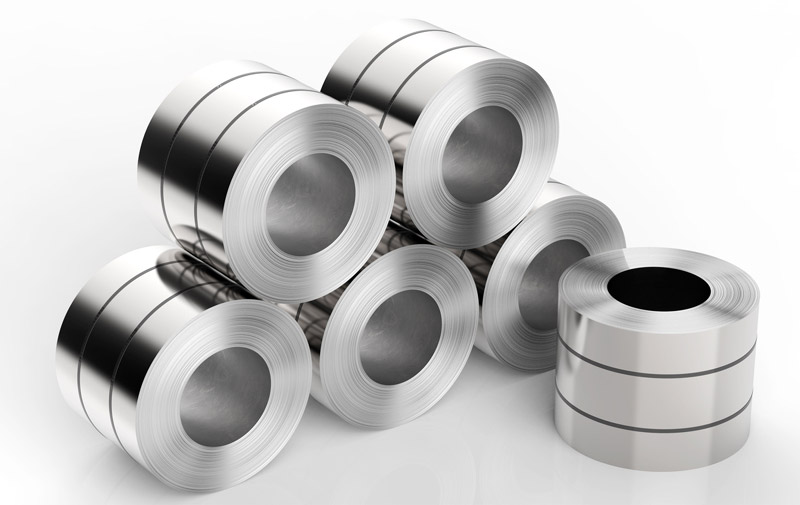
The Importance of Heat Treatment in Ferrous Alloys
Heat treatment is a critical and versatile process in the realm of ferrous alloys, and it plays a vital role in tailoring their mechanical properties to meet specific engineering requirements. The importance of heat treatment in ferrous alloys cannot be overstated, as it allows manufacturers to achieve precise control over factors such as hardness, strength, toughness, and ductility. Here are some key aspects highlighting the significance of heat treatment in ferrous alloys:
Altering Microstructure: Heat treatment involves subjecting the ferrous alloy to controlled heating and cooling processes to induce changes in its microstructure. These changes can include the transformation of phases, dissolution and precipitation of alloying elements, and grain size modification. By carefully controlling the heating and cooling rates, as well as the temperatures, engineers can achieve desired microstructural characteristics that directly influence the alloy’s properties.
Enhancing Mechanical Properties: Heat treatment can significantly enhance the mechanical properties of ferrous alloys. For example, quenching and tempering processes can increase the hardness and strength of steel while maintaining a reasonable level of ductility. This makes it suitable for applications where a balance between strength and toughness is required, such as in the construction of heavy machinery or structural components.
Improving Wear Resistance: Through heat treatment, ferrous alloys can be made more wear-resistant. Surface hardening techniques like carburizing and nitriding introduce carbon and nitrogen into the surface layers of the material, creating a hardened case while retaining a ductile core. Such alloys find use in the manufacturing of gears, bearings, and other components subject to abrasive wear.
Stress Relief and Annealing: Heat treatment processes like stress relief and annealing are essential for reducing residual stresses, improving machinability, and enhancing the formability of ferrous alloys. These processes are commonly applied to components that have undergone extensive machining or forming operations, ensuring they maintain their dimensional stability and structural integrity.
In conclusion, heat treatment is a fundamental and indispensable aspect of working with ferrous alloys. It empowers engineers and manufacturers to precisely control the properties of these materials, tailoring them to specific applications, whether it be for high-strength structural components, wear-resistant surfaces, or components requiring dimensional stability. The ability to customize ferrous alloys through heat treatment contributes significantly to the versatility and widespread use of these materials in various industries.
Corrosion Resistance in Stainless Steel Alloys
Corrosion resistance is one of the most notable and valuable properties of stainless steel alloys. Stainless steel alloys are specifically engineered to resist corrosion, making them highly sought after in various industries where exposure to moisture, chemicals, or harsh environments is a concern. This exceptional corrosion resistance is primarily attributed to the presence of chromium (Cr) in the alloy, which forms a thin, passive oxide layer on the surface of the material when exposed to oxygen. Here’s why corrosion resistance is a hallmark of stainless steel alloys:
Chromium Oxide Layer: The key to stainless steel’s corrosion resistance is the chromium content, typically at least 10.5%. When stainless steel is exposed to oxygen, the chromium in the alloy reacts with the air to form a protective layer of chromium oxide (Cr2O3) on the surface. This oxide layer acts as a barrier, preventing further oxygen and moisture from reaching the underlying steel. It effectively isolates the steel from the corrosive elements, inhibiting rust formation and corrosion.
Versatility: Stainless steel alloys come in various grades and formulations, each designed to withstand specific corrosive environments. For example, austenitic stainless steels like 304 and 316 are highly resistant to corrosion in a wide range of conditions, making them suitable for applications in marine environments, chemical processing plants, and food processing equipment. Duplex stainless steels combine excellent corrosion resistance with high strength and are used in demanding applications like offshore oil platforms.
Low Maintenance: Stainless steel’s resistance to corrosion means that structures and equipment made from these alloys require minimal maintenance over their lifetime. This not only saves on maintenance costs but also ensures the long-term integrity and reliability of the components, making stainless steel a cost-effective choice for many applications.
Aesthetic Appeal: In addition to its corrosion resistance, stainless steel alloys are known for their attractive appearance and cleanliness. They maintain their luster and finish even in corrosive environments, making them popular choices in architectural designs, kitchen appliances, and decorative elements.
Corrosion resistance is a fundamental property that sets stainless steel alloys apart from many other materials. This unique ability to resist rust and corrosion, even in challenging conditions, has made stainless steel a go-to material in industries where durability, hygiene, and longevity are critical factors. Its versatility, low maintenance requirements, and aesthetic appeal make it a reliable choice for a wide range of applications.
Ferrous Alloys in Manufacturing and Construction
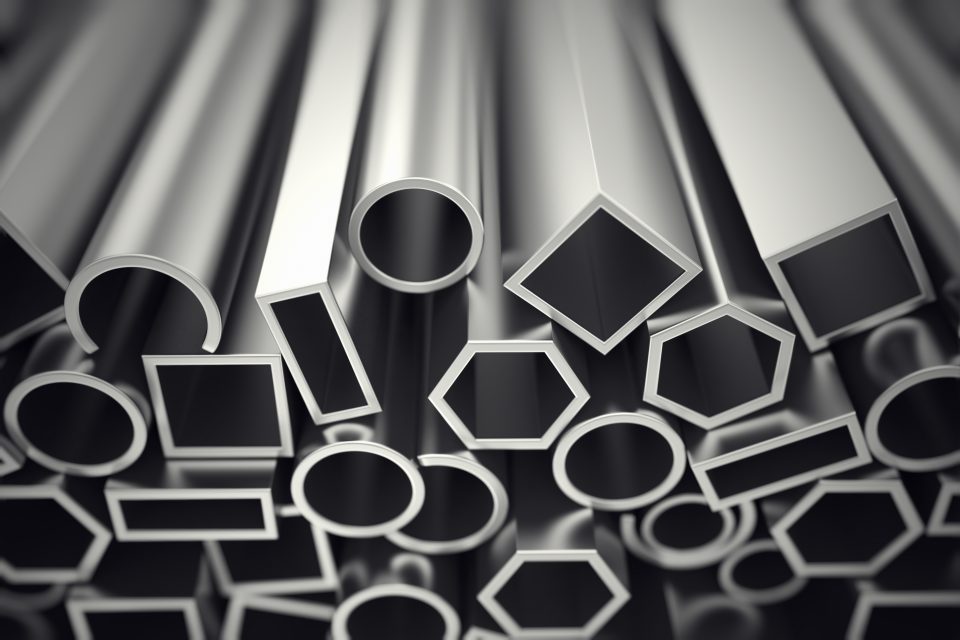
Ferrous Alloys in Manufacturing and Construction
Ferrous alloys are indispensable in both manufacturing and construction. In manufacturing, they find extensive use in machinery and equipment due to their strength and durability, with tool steels being employed for cutting tools, dies, and molds. The automotive industry relies heavily on ferrous alloys, particularly steel, for components like gears, shafts, and car bodies. Aerospace and defense sectors utilize titanium alloys for their high strength and corrosion resistance.
In the construction industry, structural steel plays a central role in building skyscrapers, bridges, and infrastructure projects, thanks to its strength, durability, and versatility. Reinforcing steel, or rebar, reinforces concrete structures, and steel alloys are used for fasteners, bolts, and plumbing systems. Ductile iron and stainless steel are used for plumbing and water distribution due to their corrosion resistance. The adaptability of ferrous alloys allows engineers and builders to select materials tailored to specific applications, contributing to the development of safe, efficient, and long-lasting products and structures in both sectors.
REFERENCES:
Fayazfar, H., Salarian, M., Rogalsky, A., Sarker, D., Russo, P., Paserin, V., & Toyserkani, E. (2018). A critical review of powder-based additive manufacturing of ferrous alloys: Process parameters, microstructure and mechanical properties. Materials & Design, 144, 98-128.
Wang, Q. Y., Berard, J. Y., Dubarre, 1. A., Baudry, 2. G., Rathery, S., & Bathias, C. (1999). Gigacycle fatigue of ferrous alloys. Fatigue & Fracture of Engineering Materials & Structures, 22(8), 667-672.
Turteltaub, S., & Suiker, A. S. J. (2005). Transformation-induced plasticity in ferrous alloys. Journal of the Mechanics and Physics of Solids, 53(8), 1747-1788.

